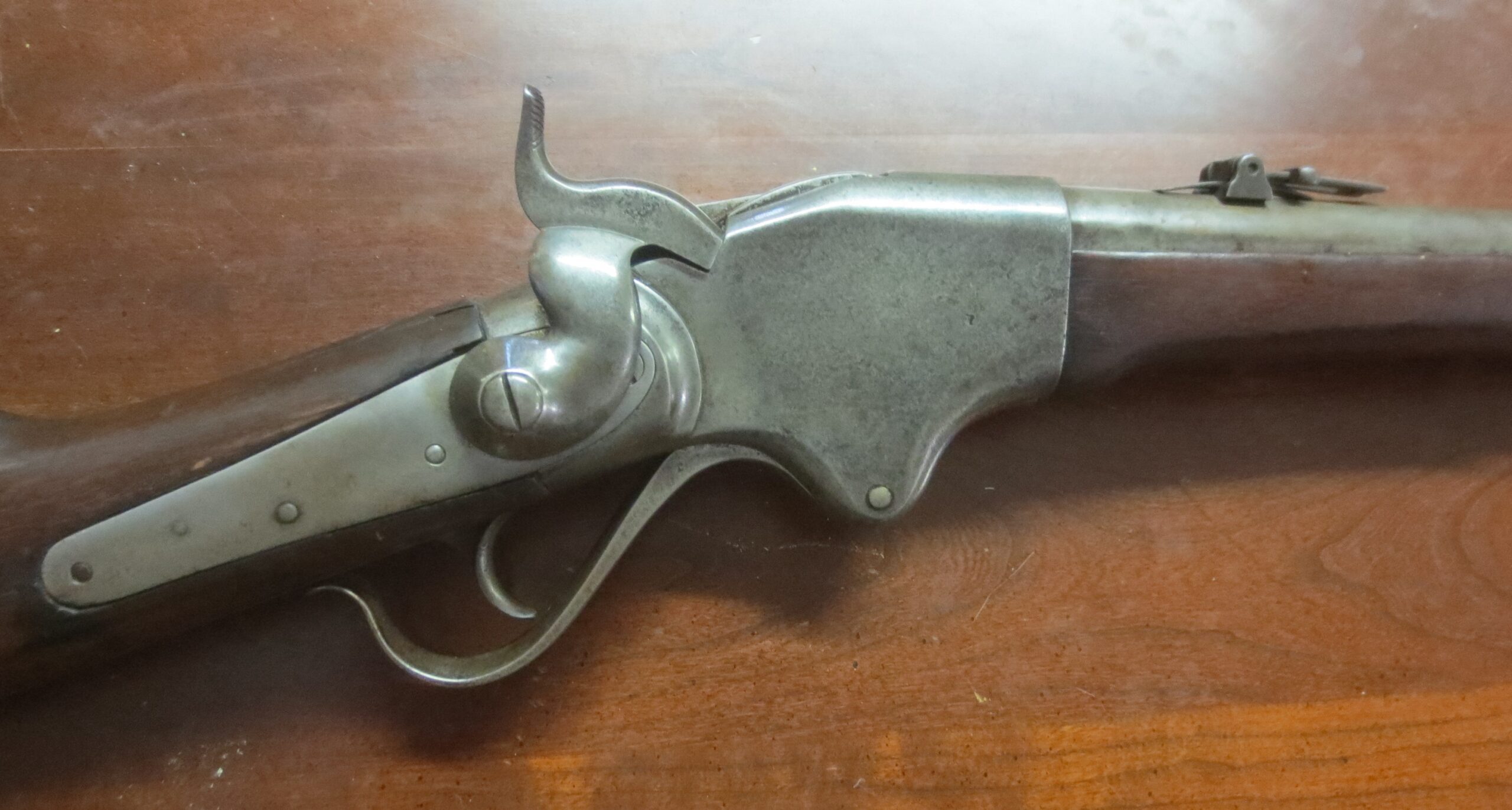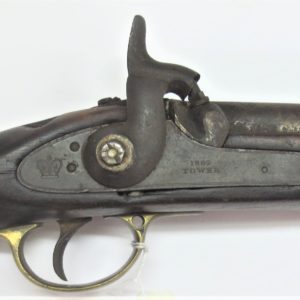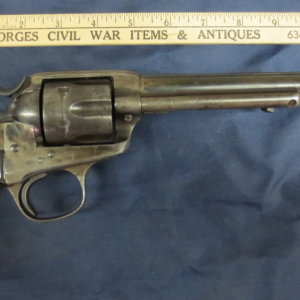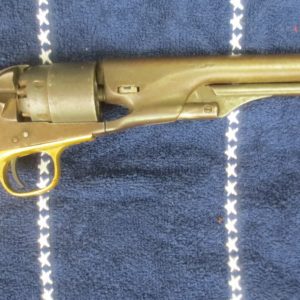Description
This Spencer has the most unusual sling swivel arrangement I have yet to see on a Civil War carbine. Clearly added to from the factory configuration, it is without question original to the use of the weapon. By records in the Springfield Research Database, this weapon falls in the range issued to the 3rd Michigan Cavalry circa late 1863. The serial number is 53947 and the action and bore are in fine overall condition. The stock has minor hairline cracks often seen with the Spencers, as the buttstock is hollowed out to accept the tubular magazine. Overall, the weapon has a very smooth and mellow gray brown age patina. As the unit was unmounted in early 1864 (see below), it is very likely that the sling swivels were added in order to more easily shoulder the heavy carbine.
The Third Cavalry was raised under the superintendence of Colonel Kellogg, who also supervised the raising of the 2nd., having its rendezvous at Grand Rapids. Its recruitment commenced early in July, 1861, mustering into the service of the United States on November 1, 1861, having on its muster rolls, 1163 officers and men.
The Regiment left for the field on November 28,1861, under the command of Lieutenant Colonel Minty, with orders to report to St.Louis,MO, where on its arrival was stationed at Benton Barracks. General Pope being engaged in a movement against New Madrid and Island #10, in the Mississippi River, they were ordered to join those forces. In command of Lt.Colonel Minty, they proceeded to that vicinity, reaching New Madrid on the 13th. of March. The Regiment participated in the Siege of Island #10, from March 14th., until the following April 8th., when it surrendered. Its first engagements with the confederates was at New Madrid, March 13th., where it commenced a most credible career. Following the retreat of the southern forces from that point, they entered upon the Grant Campaign in Mississippi, serving under the command of General Rosecrans, encountering the southern forces with much success in numerous engagements and skirmishes, at Spangler’s Mills, July 26th., Bay Spring, September 10th., then Iuka, September 19th., where they became conspicuously distinguished while under the command of Captain Wilcox, Colonel Mizner being then Chief of Cavalry.
The Regiment was actively occupied in the engagements at Corinth, October 3rd. and 4th., at Hatchie, October 6th., Hudsonville, November 14th., Holly Springs, November 19th., Lumkin’s Mills, November 30th., Oxford, December 2nd., then Coffeeville on December the 5th. Besides which had been taken while cooperating with other regiments, the Third captured 3 Lieutenant Colonels, 2 Majors, 13 Captains, 19 Lieutenants and 1249 men. Its losses had been 7 killed, 45 wounded and 59 prisoners. The weather and strain of the movements had caused the death of an additional 104 men. The Regiment, again met the Confederates at Grenada, on August 14th,1863, Byhalia, October 12th., then at Wyatt’s Ford, on the Tallahatchie River, on October 13th.
During November and December, 1863, the Regiment was constantly engaged in scouting, along with various expeditions through Northern Mississippi and Western Tennessee, visiting most of the important places in the region. They had frequent encounters with Confederate forces, under General Forrest and Chalmers. Although still dismounted, the Regiment left the city on the 18th. of May, proceeding to Little Rock,AR, where they arrived on the 24th., reporting to Major General Steele. They were mounted on the 1st., then soon thereafter began scouting through the state. They assisted in driving confederate General Shelby beyond the Arkansas River, in dispersing the bands of guerrillas that roamed the area, and captured over 800 head of cattle. From November, 1864, through February, 1865, the Regiment constituted the garrison of the post of Brownsville Station, on the Memphis and Little Rock Railroad, occupied with scouting along the line of that road and making several expeditions as far south as Arkansas Post. On the 14th. of March, the brigade was transferred from the Department of Arkansas to the Military Division of West Mississippi, to join the troops under Major General Canby. They left Mobile on May 8th., marching cross country to Baton Rouge, reaching there the 22nd. When General Sheridan assumed the command of the Military Division of the Southwest, the Regiment was selected, then ordered to report to him for duty, then immediately prepared to join the Expedition to Texas, leaving Baton Rouge for Shreveport, June 10th., commencing the march into Texas, arriving at San Antonio the 2nd. of August. Remaining there, patrolling the general area, until February 15, 1866, at which time they were dismounted, mustered out of service, and sent home to Michigan, arriving at Jackson on March 10th., then paid off and disbanded on the 15th.
During their term of Federal service, they were engaged at:
New Madrid, Mo Island #10, Mo Farmington, Ms Corinth, Ms Spangler’s Mills, Ms Bay Springs, Ms Iuka, Ms Hatchie, Ms Holly Springs, Ms Hudsonville, Ms Lumkin’s Mills, Ms Oxford, Ms Coffeeville, Ms Brownsville, Ms Clifton, Ms Panola, Ms Grenada, Ms Byhalia, Ms Wyatt’s Ford, Ms Ripley, Ms Orizaba, Ms Ellistown, Ms Purdy, Ms Jack’s Creek, Ms 1862-1865
Total Enrollment 2560; Killed in Action 25; Died of Wounds 10; Died of Disease 379
Total Casualty Rate 16.1%










